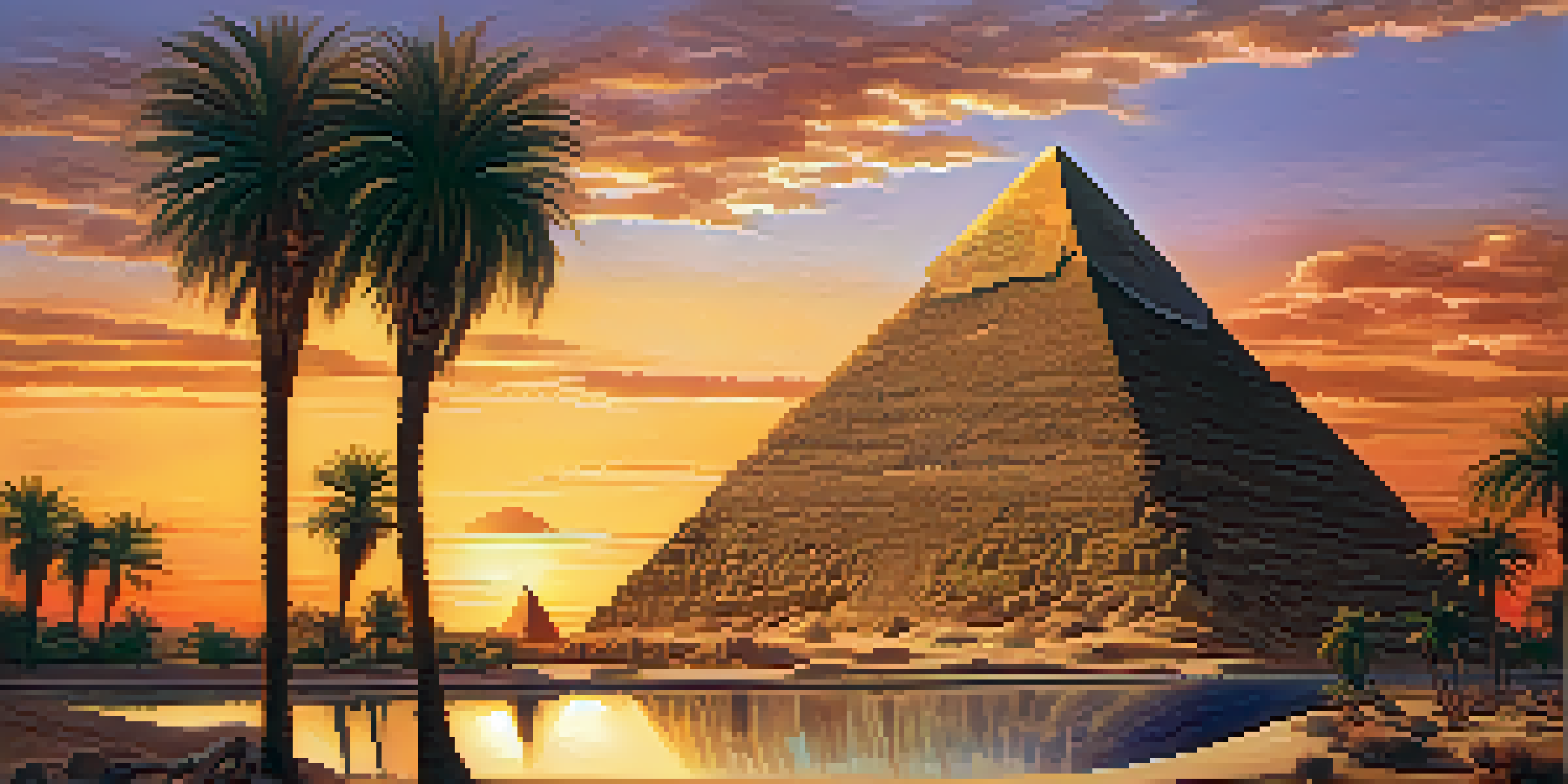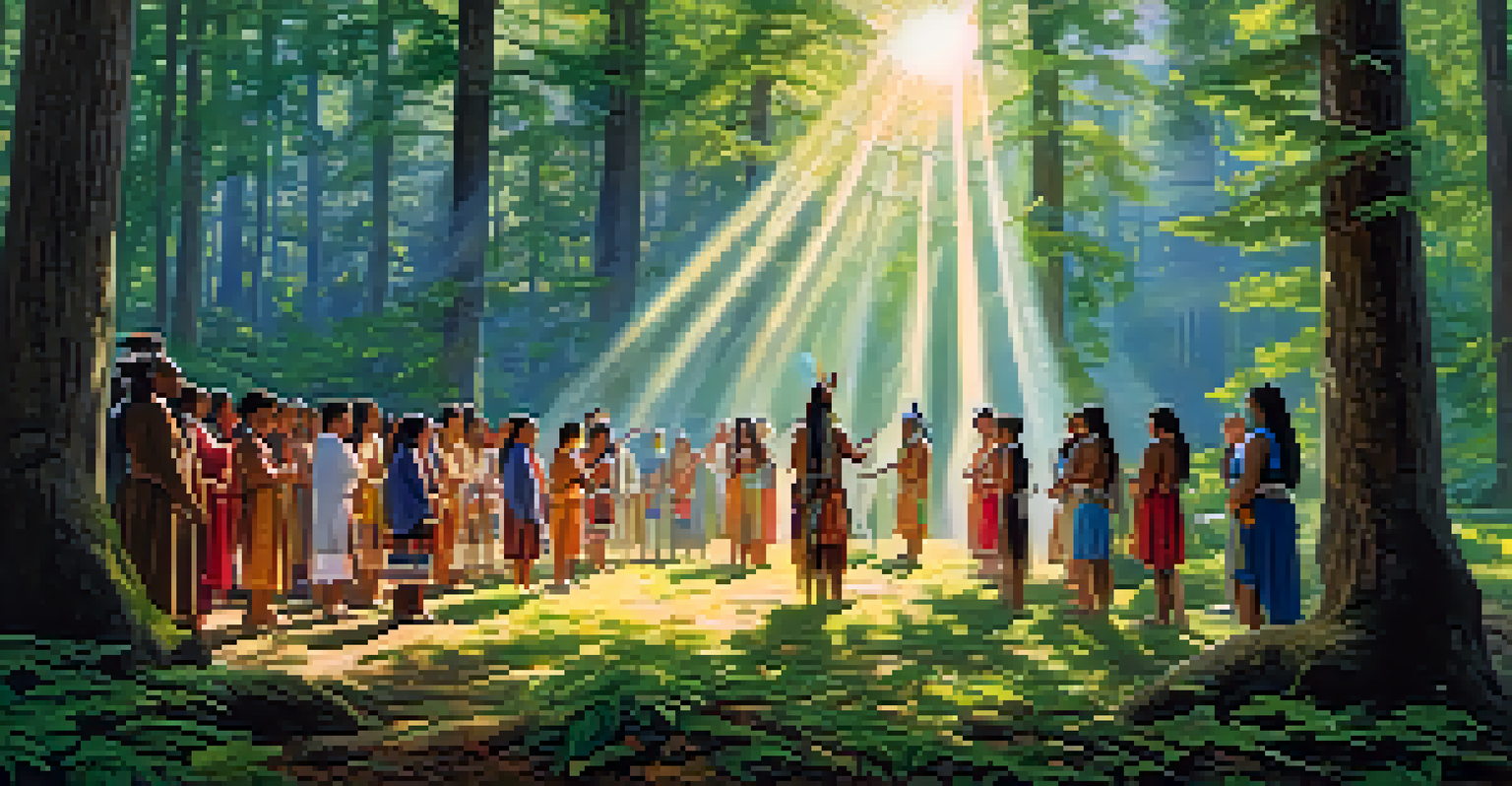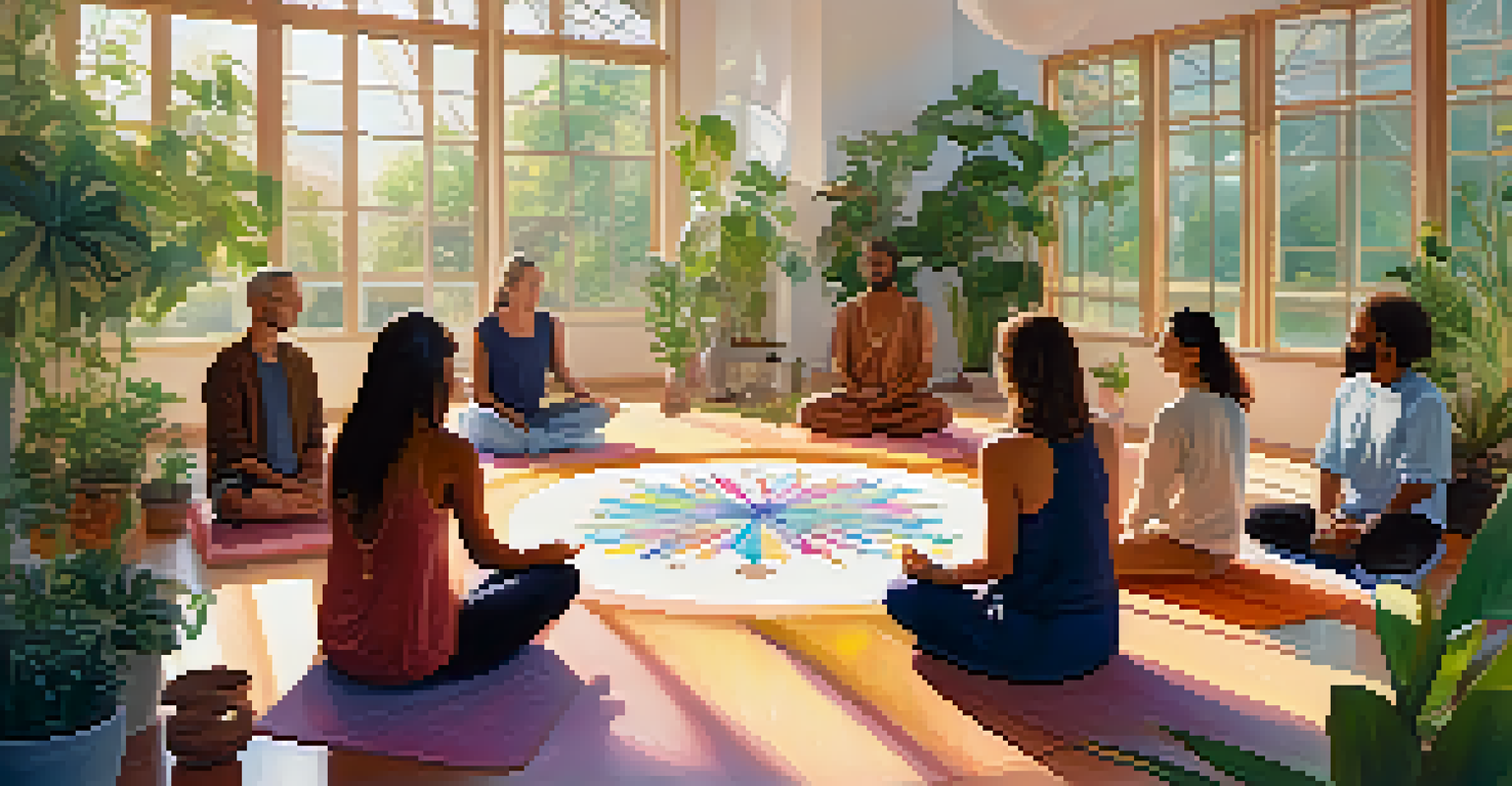The Evolution of Afterlife Beliefs Across Cultures

Ancient Civilizations and Their Afterlife Concepts
Ancient civilizations like the Egyptians, Greeks, and Mesopotamians had rich narratives about the afterlife. The Egyptians believed in a complex journey to the afterlife, where the heart was weighed against a feather to determine one's fate. In contrast, the Greeks introduced the idea of Hades, a shadowy realm where souls resided, emphasizing a more neutral afterlife experience.
The soul is the form of the body.
These early beliefs reflect a deep human desire to understand what happens after death. For instance, the burial practices of the Egyptians, including mummification, showcased their belief in the soul's journey. Similarly, the Greek emphasis on rituals like offerings to the dead highlights a cultural approach to honoring and remembering loved ones.
As we delve into these ancient beliefs, we see how they laid the groundwork for later spiritual ideas. The interplay between fear, reverence, and curiosity about death still resonates in contemporary views, showing that the quest for knowledge about the afterlife is a timeless endeavor.
Eastern Philosophies: Reincarnation and Karma
In many Eastern cultures, beliefs about the afterlife often revolve around the concepts of reincarnation and karma. Hinduism, for instance, teaches that the soul undergoes a cycle of birth, death, and rebirth, with one's actions in previous lives determining their future circumstances. This idea encourages individuals to live morally, as their current life is influenced by past deeds.

Buddhism shares similar beliefs but emphasizes the idea of enlightenment as a way to break free from the cycle of rebirth. The notion of karma in both religions highlights a moral framework that underscores the interconnectedness of life and the consequences of actions. This perspective offers a sense of continuity and purpose that resonates deeply with many followers.
Diverse Afterlife Beliefs Across Cultures
Ancient civilizations and modern spiritual movements exhibit varied beliefs about the afterlife, reflecting humanity's quest for meaning beyond death.
By examining these philosophies, we uncover a different approach to the afterlife—one that focuses on growth and evolution of the soul. This belief in continual rebirth can provide comfort and motivation, encouraging individuals to strive for better lives in the present.
Abrahamic Religions: Heaven, Hell, and Judgment
Abrahamic religions, including Judaism, Christianity, and Islam, have distinct views on the afterlife that commonly involve concepts of heaven, hell, and divine judgment. These beliefs are often rooted in sacred texts, with the promise of paradise for the righteous and punishment for the wicked. This duality creates a moral compass that guides followers' actions and decisions.
Death is nature's way of telling you to slow down.
For example, Christianity emphasizes faith and salvation, presenting heaven as a place of eternal joy and communion with God. In Islam, the Day of Judgment determines one's eternal fate based on a balance of good and evil deeds. Such beliefs instill a sense of accountability and hope among believers, shaping their lives around spiritual goals.
The shared themes of reward and punishment across these religions reflect a universal human concern with justice and morality. The stories and teachings associated with afterlife beliefs encourage adherents to reflect on their lives and relationships, emphasizing the importance of living ethically.
Indigenous Beliefs: Nature and Ancestral Spirits
Indigenous cultures around the world often hold unique beliefs about the afterlife that are deeply intertwined with nature and ancestral spirits. Many view death as a transition rather than an end, where the spirit continues to live on in the natural world or among ancestors. This connection to the land and lineage fosters a strong sense of community and continuity.
For instance, Native American tribes often honor their ancestors through rituals and storytelling, maintaining a belief that the spirits guide and protect the living. Similarly, African tribes may celebrate the lives of their deceased through dance and music, reinforcing the idea that death is a part of the ongoing cycle of life.
Moral Frameworks Shape Spiritual Views
Religious and philosophical perspectives often establish moral codes that guide individuals' actions and decisions in life based on their beliefs about the afterlife.
These beliefs highlight the significance of relationships—not just with family but also with the environment. Understanding the afterlife in this context encourages a holistic view of existence, blending the physical and spiritual realms in a way that emphasizes respect for both.
Modern Spiritual Movements: New Age Perspectives
In recent decades, modern spiritual movements have emerged, often blending elements from various traditions and introducing new concepts of the afterlife. The New Age movement, for example, emphasizes personal spiritual experience, suggesting that the afterlife is not strictly defined but rather a reflection of individual beliefs and vibrations. This fluidity allows for a more personal interpretation of what happens after death.
Many adherents of these movements embrace ideas like ascension, where the soul evolves to higher states of consciousness. This perspective encourages individuals to explore their spirituality beyond traditional religious confines, often incorporating practices like meditation and energy healing. Such practices empower individuals to take charge of their spiritual journeys.
As we navigate these modern beliefs, we see a shift from dogma to personal exploration. This evolution reflects broader societal changes, where spirituality is increasingly viewed as a personal and diverse experience, making the afterlife a topic of individual contemplation rather than a communal doctrine.
Philosophical Views: Existentialism and Afterlife
Philosophical perspectives on the afterlife often challenge traditional religious views, questioning the existence of an afterlife altogether. Existentialists, for example, focus on the importance of living authentically in the present, suggesting that the search for meaning should occur within this life rather than in the next. This approach encourages individuals to create their own purpose and values.
Philosophers like Jean-Paul Sartre argue that our existence precedes essence, meaning we define ourselves through our actions and choices. For many, this view can be liberating, as it emphasizes personal responsibility and the significance of life experiences over afterlife beliefs. Such a stance can resonate deeply with those who seek autonomy in their spiritual journeys.
Cultural Practices Reflect Afterlife Views
Rituals surrounding death and mourning in different cultures highlight the importance of community and shared identity shaped by beliefs about what follows life.
By examining these philosophical frameworks, we see a departure from dogmatic beliefs toward a more introspective approach. This shift invites individuals to contemplate their existence and legacy, focusing on how they can impact the world while they are here.
The Role of Afterlife Beliefs in Shaping Cultures
Throughout history, afterlife beliefs have played a crucial role in shaping cultures and societies. They influence moral codes, community practices, and even legal systems, offering a framework for understanding life and death. These beliefs often create a shared identity, fostering a sense of belonging among individuals within a culture.
For instance, the rituals surrounding death and mourning reflect cultural values and the importance of honoring those who have passed. In many cultures, these practices build community ties, as people come together to support one another during times of loss. This collective experience can strengthen social bonds and reinforce cultural traditions.

Moreover, as globalization continues to blur cultural boundaries, the exchange of afterlife beliefs can lead to hybrid practices and new interpretations. This ongoing evolution showcases the dynamic nature of spirituality, illustrating how cultures adapt and transform their beliefs in response to changing societal landscapes.